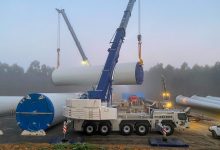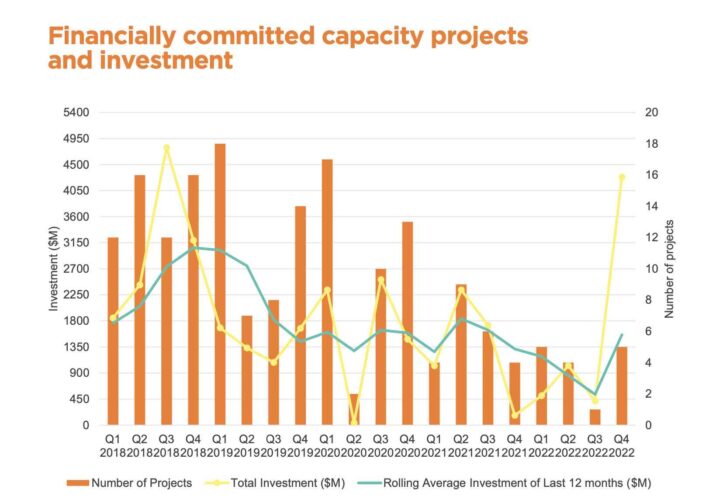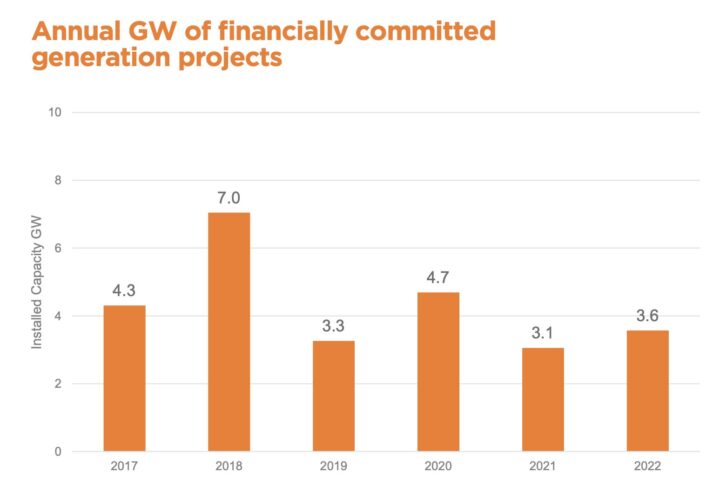Australia has received a welcome investment bump in new financially committed new wind, solar and storage projects in the last quarter, but the country remains well behind the rate of investment needed to reach its declared target of 82 per cent renewables by 2030.
The latest quarterly assessment by the Clean Energy Council says a a particularly strong December quarter of $4.3 billion – the highest in dollar terms since 2018 – rescued an otherwise poor year for new investment in 2022, when just $6.2 billion was committed, half the rate of 2018.
The last quarter followed a slump in the previous quarter when just a single new project reached financial commitment. The latest quarter saw six generation and storage projects reach that phase, dominated by the massive $2 billion Golden Plains wind project in Victoria.
Kane Thornton, the chief executive of the CEC, says the December quarter indicates that the industry is responding to the policies of the new federal Labor government, elected last May, and the targets set by various state governments. But it’s still not nearly enough.
“While the uptick is encouraging, one quarter doesn’t mean a trend,” Thornton said in a statement. “Australia is deploying new large- scale generation – wind and solar farms – more slowly than needed to reach the 82 per cent target for renewable energy on the National Electricity Market.
“The fact remains that the rolling quarterly average investment over 12 months has not risen above $2 billion since the second quarter of 2019.”
The failure to keep pace with the rollout needed to meet the 82 per cent target – the share modelled by the Australian Energy Market Operator’s Integrated System Plan, and endorsed by the industry and adopted by the federal government, is not news.
AEMO has spoken of the need to build 45GW of new capacity by 2030, including 36GW of new wind and solar and 9GW of storage. In the last year, just 3.6GW of capacity reached financial commitment, and in the latest quarter, according to CEC figures, just 275MW of new capacity started construction.
Various companies have talked of big plans to build tens of billions of dollars of new projects by 2030 – including Origin bidder Brookfield, and Andrew Forrest’s Squadron Energy – but the commitment stage has not been reached despite more than 100GW of projects in the pipeline.
Thornton, however, says Australia’s targets and ability to attract capital and build new projects is being compromised by the ambitious policy settings in the US, in Europe and in the Middle east.
“It’s clear that with significant shifts in capital overseas through the United States Inflation Reduction Act and other responses from the likes of the European Union and the Gulf States, Australia needs to do more,” he said.
The CEC is pushing for the existing renewable energy target – which underpinned the surge in investment in recent years – needs to be increased and extended beyond its current 2030 deadline.
“We know that to truly have an effect on long-term energy prices, Australia needs the security provided by low-cost electricity direct from solar and wind and reduce our reliance on increasingly expensive gas and unreliable coal generation,” Thornton said.












